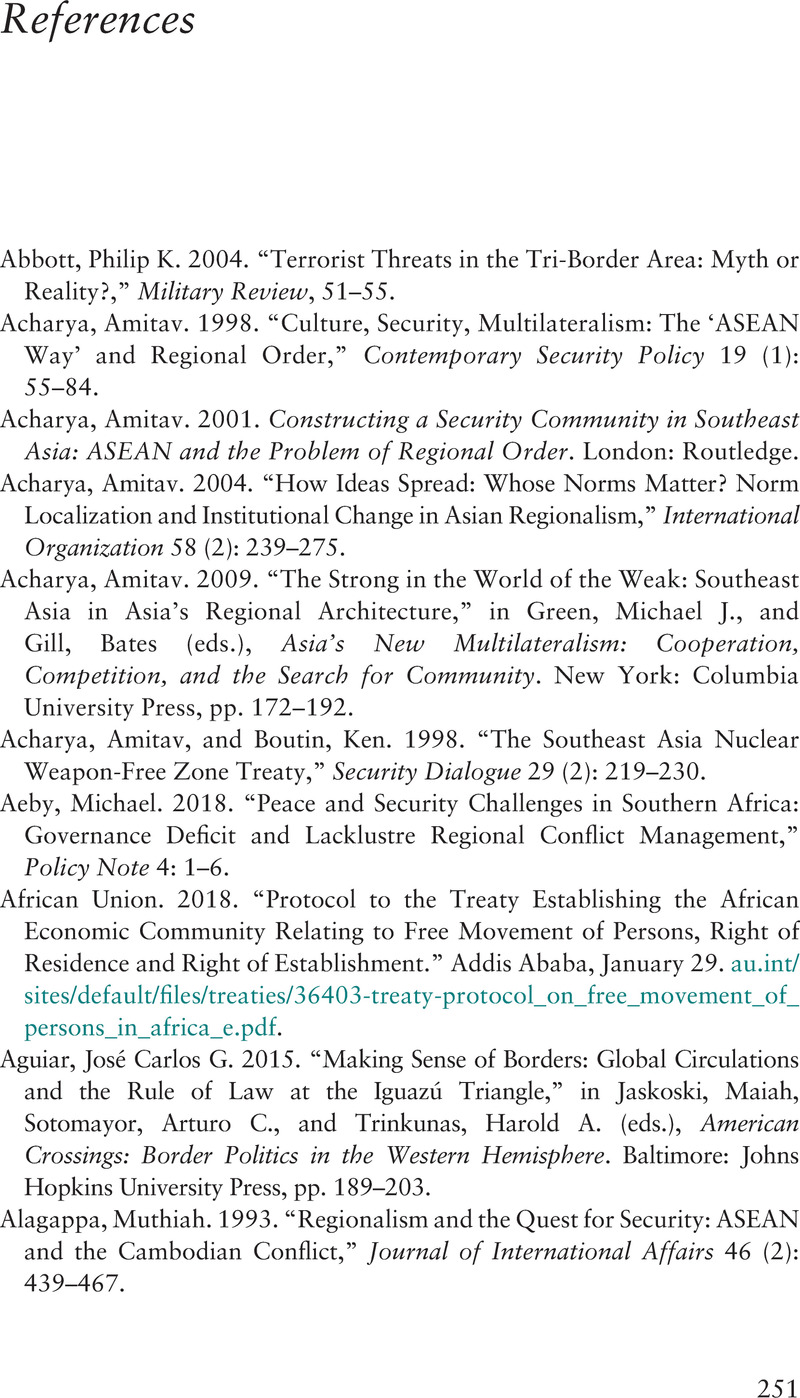Book contents
- The Unintended Consequences of Peace
- The Unintended Consequences of Peace
- Copyright page
- Dedication
- Contents
- Tables
- Preface
- Abbreviations
- 1 The Reality of Peaceful Borders and Illicit Transnational Flows
- 2 A Framework to Explain the Reality of Peaceful Borders and Illicit Transnational Flows
- 3 The Americas: A General View
- 4 The Americas: From the US-Canadian Border to the Tri-Border Area of South America
- 5 Europe: The Schengen Regime and the Western Balkan Borders
- 6 A Triangle of Peace in the Middle East: The Israeli–Egyptian and Israeli–Jordanian Borders
- 7 The Southern African Borders in the Postapartheid Era
- 8 ASEAN and the Southeast Asian Borders
- 9 Comparisons, Policy Recommendations, and Conclusions
- References
- Index
- References
References
Published online by Cambridge University Press: 11 June 2021
- The Unintended Consequences of Peace
- The Unintended Consequences of Peace
- Copyright page
- Dedication
- Contents
- Tables
- Preface
- Abbreviations
- 1 The Reality of Peaceful Borders and Illicit Transnational Flows
- 2 A Framework to Explain the Reality of Peaceful Borders and Illicit Transnational Flows
- 3 The Americas: A General View
- 4 The Americas: From the US-Canadian Border to the Tri-Border Area of South America
- 5 Europe: The Schengen Regime and the Western Balkan Borders
- 6 A Triangle of Peace in the Middle East: The Israeli–Egyptian and Israeli–Jordanian Borders
- 7 The Southern African Borders in the Postapartheid Era
- 8 ASEAN and the Southeast Asian Borders
- 9 Comparisons, Policy Recommendations, and Conclusions
- References
- Index
- References
Summary

- Type
- Chapter
- Information
- The Unintended Consequences of PeacePeaceful Borders and Illicit Transnational Flows, pp. 251 - 288Publisher: Cambridge University PressPrint publication year: 2021



